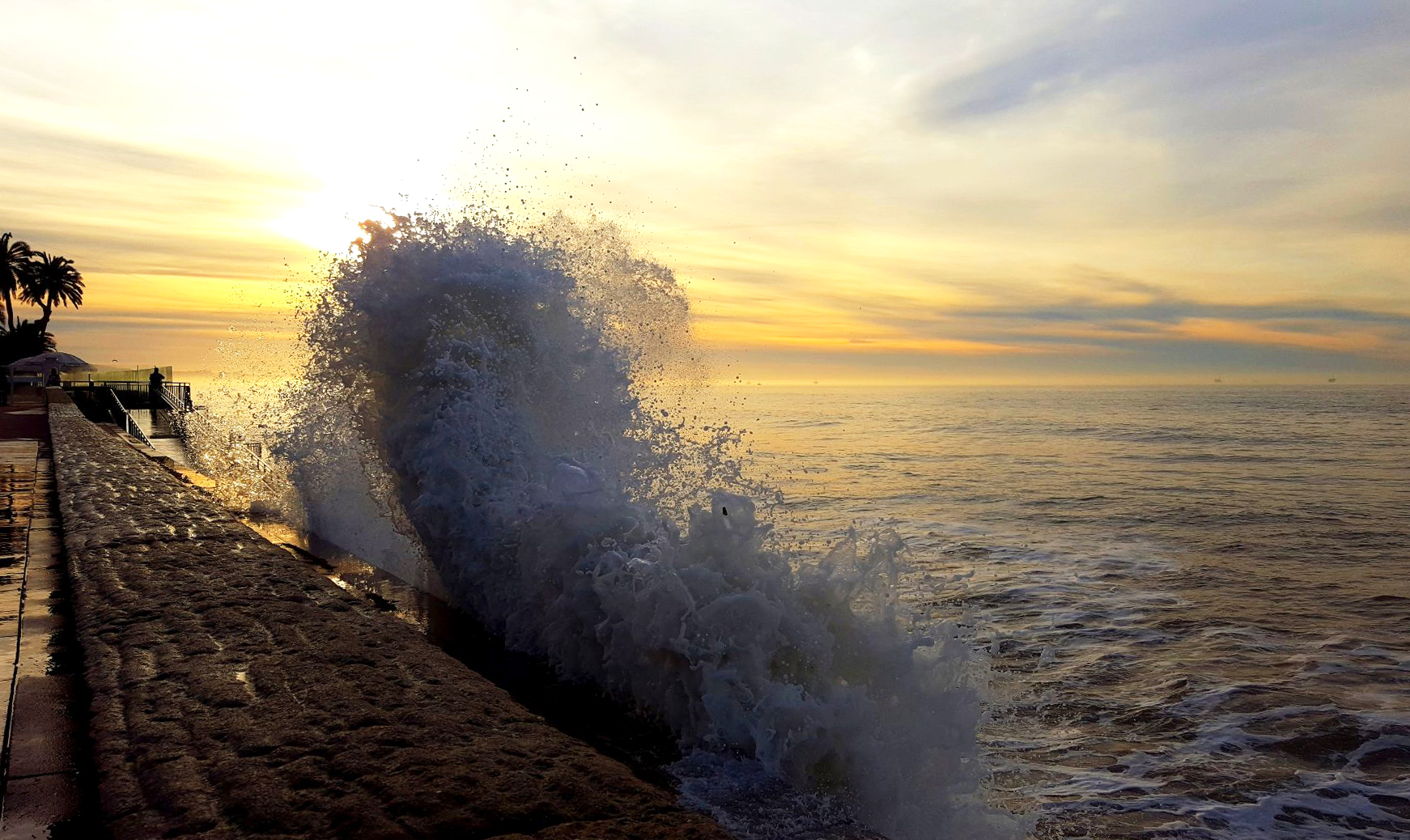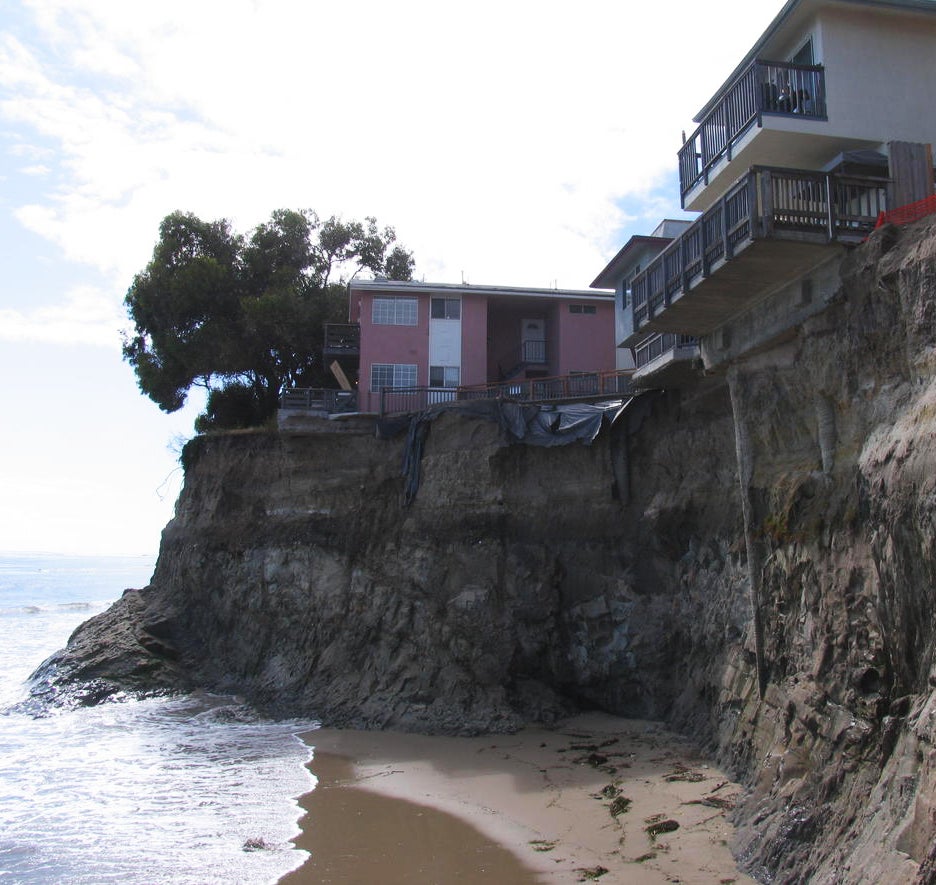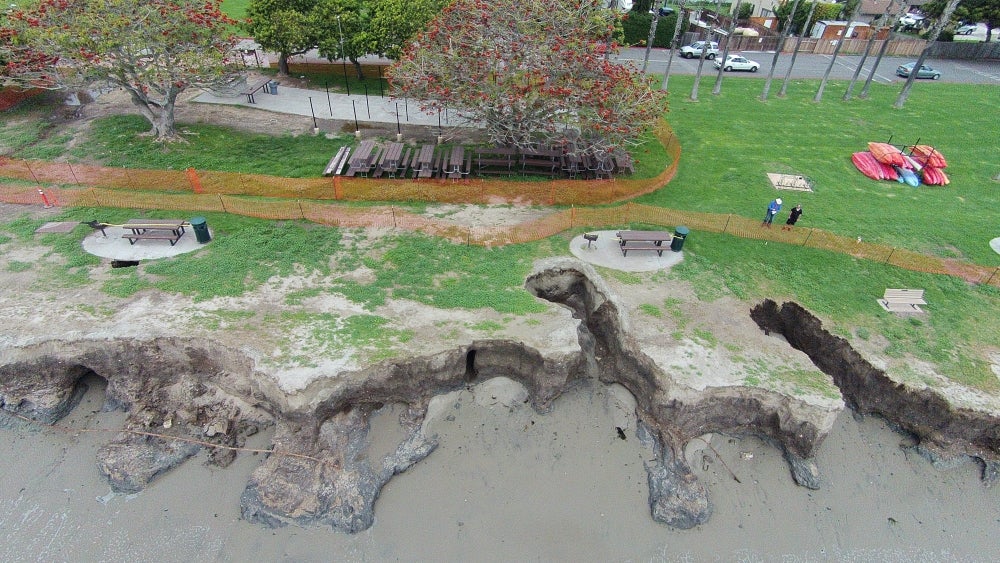
Preparing for the Future
Santa Barbara County residents love their coastline, from the small-town beaches of Carpinteria to Santa Barbara’s waterfront to camping hotspots like Jalama Beach and dramatic Guadalupe Dunes. But drastic changes are in store in coming decades as temperatures and sea levels rise, bringing massive impacts to local ecology and human systems.
To help local coastal and land use managers prepare, a multidisciplinary team of researchers has synthesized projected changes to the Santa Barbara coast that are expected as a result of the warming climate, as well as options for adaptation. The new study is published in the journal Ocean and Coastal Management.
The paper specific to the Santa Barbara area is a joint effort between researchers at UC Santa Barbara, California Sea Grant, U.S. Geological Survey, UMass Amherst, Northeastern University and Scripps Institution of Oceanography at UC San Diego.
The complete story about this work, from UC San Diego, follows:
Building on research conducted through the Santa Barbara Area Coastal Ecosystem Vulnerability Assessment, which drew upon long term datasets collected by the Santa Barbara Coastal Long Term Ecological Research Program (National Science Foundation) and was incorporated into the Fourth California Climate Change Assessment, the new study specifically examined the impacts of climate change on watersheds, coastal hazards, wetlands and sandy beach ecosystems. It also includes specific recommendations for adaptation aimed at policymakers and managers.

Local planners already contend with wave-driven erosion along the coast in places such as Isla Vista. Photo by Patrick Barnard/USGS
“What’s new about this study is its consideration of multi-faceted climate changes of physical and biological elements of the Santa Barbara coastal region,” said lead author Monique Myers, a California Sea Grant extension specialist based in Santa Barbara, with appointments at both Scripps Institution of Oceanography and at UC Santa Barbara. “Further, we identify actions that local governments can take to balance the needs of ecosystems and human populations in the face of climate change. While climate change is a global problem, there is a lot we can do at the local level to protect our communities and natural environment.”
Key impacts include:
Temperature: The number of extremely hot days will likely double by 2050 and could increase by a factor of 10 by 2090. More frequent and intense heat waves will be detrimental to both health and ecosystems, and increase demand for water and energy for air conditioning.
Precipitation: Longer dry spells and more frequent drought will impact water supplies and increase fire vulnerability. Heavy precipitation, when it does occur, will produce floods and erosion.
Sea-level rise: More frequent and higher extreme sea levels will lead to flooding, coastal erosion and transformation and/or loss of beach and wetland ecosystems — these vulnerable and diverse coastal ecosystems could suffer great losses by 2050. The study finds that upper beach zones and high marsh habitats disappear first.

Goleta Beach after a particularly intense 2016 El Nino event. Photo by Arthur Sylvester/UCSB
An ecosystems view brings new ideas for adaptation
While climate adaptation planning often focuses on impacts to the environment people have built for themselves — homes, businesses, roads and other infrastructure — the new study shows that expanding climate adaptation planning to natural ecosystems can identify not just the impacts on these environments, but also creative solutions that could simultaneously preserve central California’s unique natural environments as well as our built communities.
“Revising current management regimes could provide new opportunities for local adaptation that conserves sandy beach ecosystems and the vital functions and services they provide to coastal communities in the face of climate change,” said UCSB researcher Jenny Dugan, also a coauthor.
Action items for local governments
The researchers say their study highlights many opportunities for local government to make a big difference. It also could be used as a model for other communities in California and beyond as they plan for the local impacts of climate change.
“With climate changes projected to increasingly add to existing stresses that affect the Santa Barbara coast, ongoing community adaptive measures will need to account for emerging climate drivers and emerging information,” said Scripps Institution of Oceanography researcher Dan Cayan.
While the study provides a pragmatic framework of adaptation options, the researchers emphasize that taking steps to adapt cannot replace the need to drastically reduce greenhouse gas emissions in the first place. Recent reports show that neither California nor the world as a whole are yet on track to meeting greenhouse gas reduction targets, and that the next few years are critical in turning the tide. Even under optimistic mitigation scenarios, a large body of scientific evidence indicates that substantial warming, sea level rise and other climate changes are inevitable in future decades, underscoring the need for local actions.
“We are already seeing the fingerprint of climate change in events like the Montecito fire and mudslides. If we don’t act as a society to deal with climate change swiftly, I’m afraid disasters will become more and more common,” said Myers. “The good news for our region is that Santa Barbara government agencies are acting now to plan to avert extreme climate impacts in future decades.”
The article is “A multidisciplinary coastal vulnerability assessment for local government focused on ecosystems, Santa Barbara area, California,” by Monique Myers, et. al. (DOI:10.1016/j.ocecoaman.2019.104921). It appears in Ocean and Coastal Management, published by Elsevier.
Copies of this paper are available to credentialed journalists upon request; please contact Elsevier's Newsroom at newsroom@elsevier.com or +31 20 485 2719.
More research stories from the Santa Barbara Channel can be found in The Current's featured compilation, Channel for Discovery.



